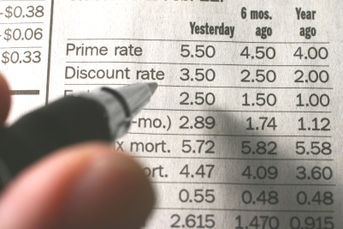The paradox of choice: Can you have too many investment options?
In the best case scenario, tailoring your portfolio offerings to the client can help increase sales
“A man has free choice to the extent that he is rational.” -Thomas Aquinas
We live in the age of customization, where the things we buy are tailored to our personal needs. From the advent of pick-your-toppings casual dining, to customized online orders for tennis shoes and toys, we’re used to getting what we want. Even basic products such as toothpaste now offer a vast array of choices.
Odds are good that your clients are therefore used to a great deal of personalization. In fact, many may view it as an important aspect of customer service.
For an adviser, it can be easy to fall into this customization trap. After all, you want your clients to have good investment options to choose from and you want to make them feel in charge of their financial future. But here’s the catch. Your goal as an adviser is not only to empower your clients — but also to cut out some of the noise associated with making good financial decisions.
As it turns out, there is such a thing as having too many choices. The most famous support of this is the so-called “Jam Study,” led by Columbia University professor Sheena S. Iyengar. Titled “When choice is demotivating: Can one desire too much of a good thing?”, the study featured a series of experiments in the field and in laboratory settings using gourmet jam and chocolate. It turns out that offering a more limited array of choices (six, versus 24 to 30) increased customers’ willingness to buy and led to increased customer satisfaction after the purchase was made.
When it came to having options, more was less.
HOW PEOPLE MAKE DECISIONS
Why might this be the case? Well, consider the way that people normally make decisions. Generally, we start by looking at all of the available choices, consider the potential outcomes from those options, rank the consequences from each course of action, and then factor in the probability that those options will be impacted by some uncertain event.
So imagine you’re making a decision with two possible outcomes. Given a set amount of time allotted to the analysis of the outcomes, you can spend 50% of your time on each. As you add more choices, this percentage continues to decrease. As a result, the odds of making a successful and logical comparison are minimized. This is the paradox of choice in a nutshell.
There is an important caveat here, however. Research in the wake of Ms. Iyengar’s initial study suggests that sometimes more choice is better, and sometimes more choice is worse. In particular, if you know a lot about a product, you prefer more choice. If you don’t, and the cost of researching appears to be high, then you prefer less choice.
To illustrate this, think about the way you choose investments. While a client might balk at examining even half a dozen funds, chances are that you appreciate a greater array of investment choices. This is why you as an adviser don’t particularly care whether there are 7,000 mutual funds out there — you’ve developed filters to wade through the mess and figure out which ones are worth a second look.
Clearly, there’s some sort of “sweet spot” for the client, one that’s very much worth figuring out. With too few options, there is the risk that none will be satisfactory, but with too many you have the risk of paralysis, confusion and dissatisfaction.
In my opinion, there may be no one number of options that works for each client; rather, I imagine it varies based on their investment acumen. For someone who knows very little about investing, fewer choices is likely better. Someone who knows more might enjoy walking through more options with you.
At the end of the day, this exercise can be a fruitful one. In the best-case scenario, tailoring your portfolio offerings to the client can help increase sales. But more importantly, you may find yourself providing excellent customer service not by increasing choices, but rather by making sure each client sees the right number of choices to meet his or her needs.
Mike West is senior partner and chief executive of BPV Capital Management.
Learn more about reprints and licensing for this article.





